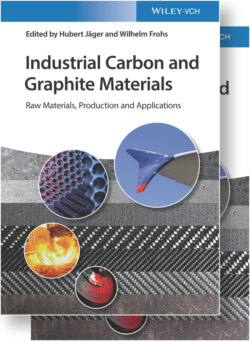Читать книгу Industrial Carbon and Graphite Materials - Группа авторов - Страница 264
6.1.1.1.3 Anthracite
ОглавлениеAnthracite is a fossil carbon material with the highest level of coalification. Compared with normal coal, it is low in ash and volatiles. The main usage of anthracite is in power plant and house heating. In the field of industrial carbon, it is used in cathodes for aluminum electrolysis and blast furnace linings and in Söderberg pastes for aluminum production. For the usage as raw material for industrial carbon production, anthracite has to be calcined in order to achieve the desired high electrical and thermal conductivity. Calcining can take place in gas‐fired shaft furnaces (1500–1800 K) or by electrical heating (1500–3300 K). The calcined anthracites are known as gas‐calcined anthracite (GCA) and electrically calcined anthracite (ECA). Depending on the source, anthracites behave differently during calcining. Some grades disintegrate during high‐temperature heat treatment. Petrographic analyses on the content of different macerals are applied to predict the quality of anthracite in this respect. Under heat treatment above 2300 K, anthracite partially graphitizes. The electric calcining furnaces have a broad temperature distribution, in particular at high temperatures. This gives an inhomogeneously calcined anthracite with varying physical properties. Efforts to improve the homogeneity of these furnaces have been made [23, 24].
